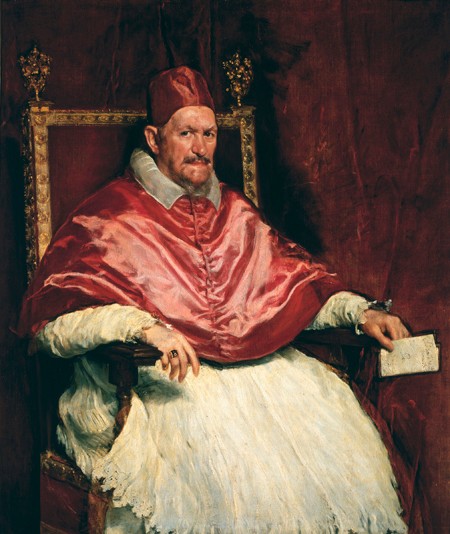The history of art and architecture in baroque Rome has essentially been told through singular relationships between powerful patrons and great artists, with Pope Urban VIII Barberini (1568–1644) and Gianlorenzo Bernini (1598–1680) best exemplifying this model. The patronage of Urban VIII’s successor, Innocent X Pamphilj (1574–1655), has traditionally been perceived as paling in comparison, largely, I
Fountain, Sant’Agnese in Agone, San Nicola da Tolentino, and the chapel of San Tommaso di Villanova, as well as the restoration of antiquities and the decorative arts. In addition, I focus on the processes—the very mechanics of patronage and the enterprise of artistic production—through which these works of art and architecture were realized.
The focus on process has led me to investigate the network of individuals, from artists and artisans to advisors and administrators, employed in Pamphilj projects, many of which were complex and involved multiple forms of art and numerous specialists. For instance, the Villa Pamphilj, whose design is attributed to Alessandro Algardi (1598–1654), involved architects, sculptors, restorers, painters, stucco workers, excavators, masons, stone carvers, carpenters,
To reconstruct the mechanics of patronage and artistic production, I am studying visual and written documentation of projects and persons, including plans, drawings, payment records, construction documents, contracts, wills, papal briefs, letters, and finished works of art. Before coming to CASVA, I conducted two archival campaigns in Rome, where I studied, transcribed, and photographed documents and works of art. My residency provided a welcome and productive period in which to analyze my primary source research and synthesize and develop my ideas while utilizing the exceptional resources of the National Gallery of Art Library. Two key accomplishments were writing a chapter outline for my book and writing part of the chapter on the
Besides making full use of the library, I benefited tremendously from conversations with colleagues both within and outside CASVA. This stimulating research period has undoubtedly advanced my progress both toward producing a revisionist study of the Pamphilj and the arts in mid-seventeenth-century Rome and toward providing a new model for papal patronage studies. This new approach sets aside the search for programmatic themes, symbolic meanings, and singular relationships in order to account for the full range of agency in the realization of complex projects.
